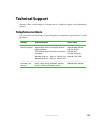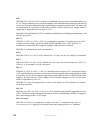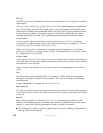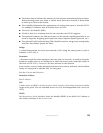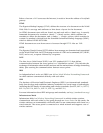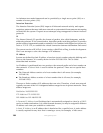177
www.gateway.com
802.11b
IEEE 802.11b (IEEE Std. 802.11b-1999) is an enhancement of the initial 802.11 PHY to
include 5.5 Mbps and 11 Mbps data rates. It uses direct sequence spread spectrum (DSSS)
or frequency hopping spread spectrum (FHSS) in the 2.4 GHz ISM band as well as
complementary code keying (CCK) to provide the higher data rates. It supports data rates
ranging from 1 to 11 Mbps.
802.11e
IEEE 802.11e is a developing IEEE standard for MAC enhancements to support QoS. It
provides a mechanism to prioritize traffic within 802.11. It defines allowed changes in the
Arbitration Interframe Space, a minimum and maximum Contention Window size, and
the maximum length (in kµsec) of a burst of data.
IEEE 802.11e is still a draft IEEE standard (most recent version is D5.0, July 2003). A
currently available subset of 802.11e is the Wireless Multimedia Enhancements (WME)
standard.
802.11f
IEEE 802.11f (IEEE Std. 802.11f-2003) is a standard that defines the inter access point
protocol (IAPP) for access points (wireless hubs) in an extended service set (ESS). The
standard defines how access points communicate the associations and reassociations of
their mobile stations.
802.11g
IEEE 802.11g (IEEE Std. 802.11g-2003) is a higher speed extension (up to 54 Mbps) to the
802.11b PHY, while operating in the 2.4 GHz band. It uses orthogonal frequency division
multiplexing (OFDM). It supports data rates ranging from 1 to 54 Mbps.
802.11i
IEEE 802.11i is a developing IEEE standard for security in a wireless local area network
(WLAN). It defines enhancements to the MAC Layer to counter the some of the weaknesses
of WEP. 802.11i will incorporate 802.1x and stronger encryption techniques, such as
Advanced Encryption Standard (AES).
IEEE 802.11i is still a draft IEEE standard (most recent version is D5.0, August 2003). A
currently available subset of 802.11i is the Wi-Fi Protected Access (WPA) standard.







